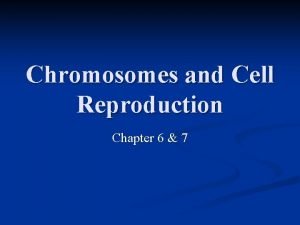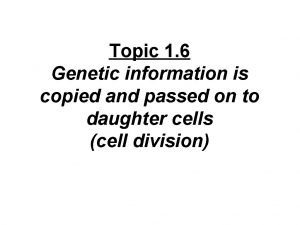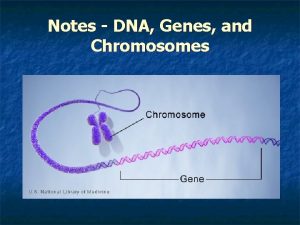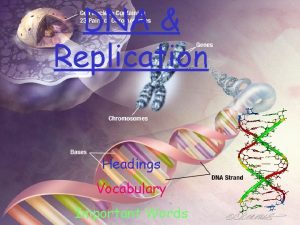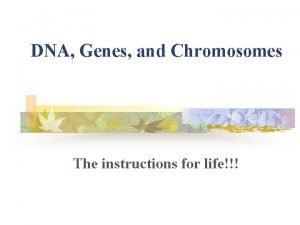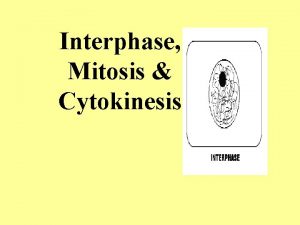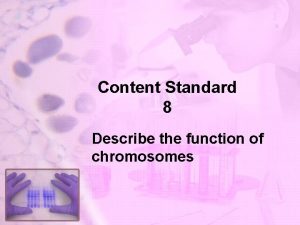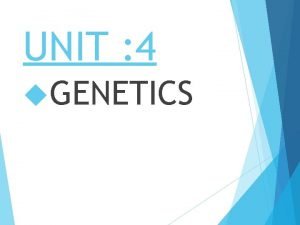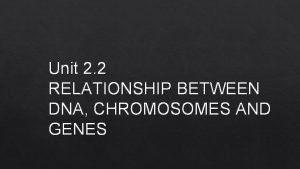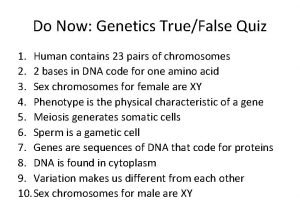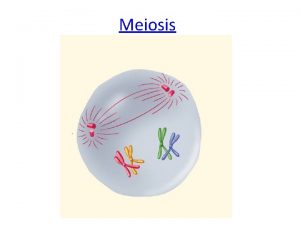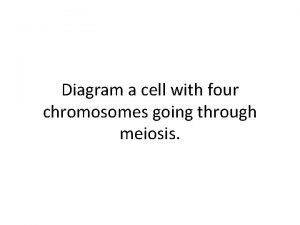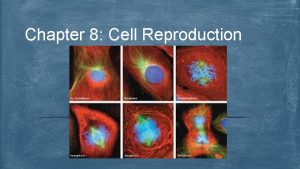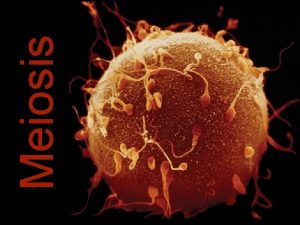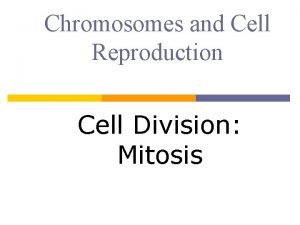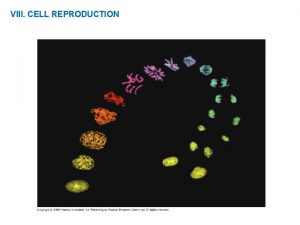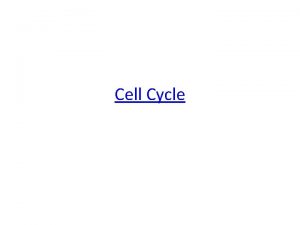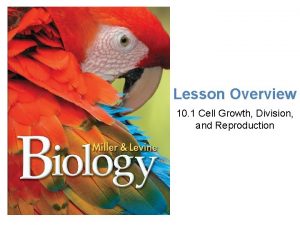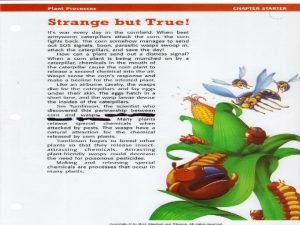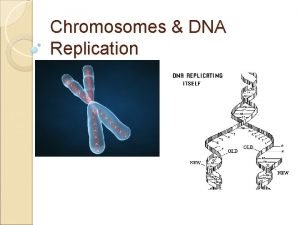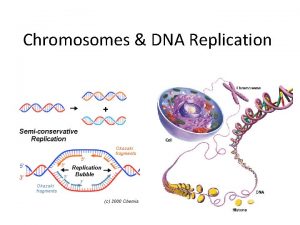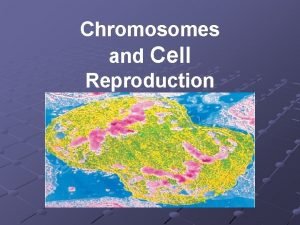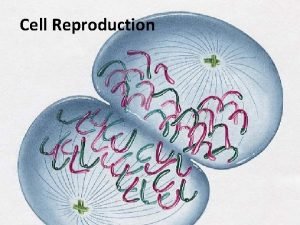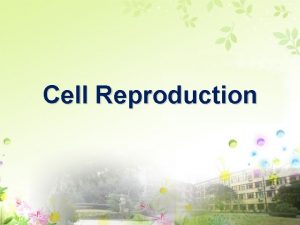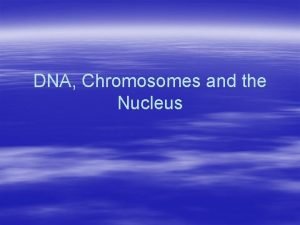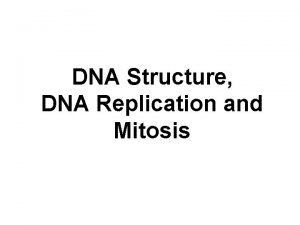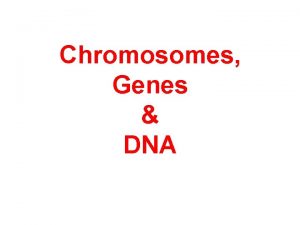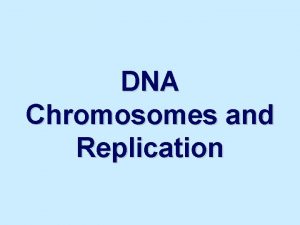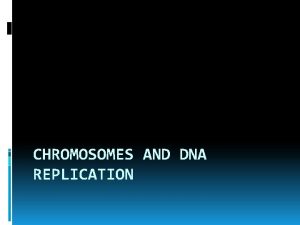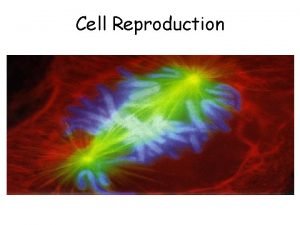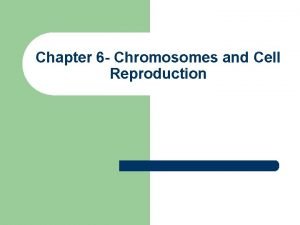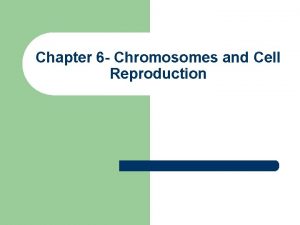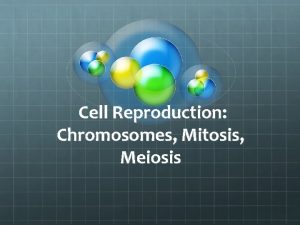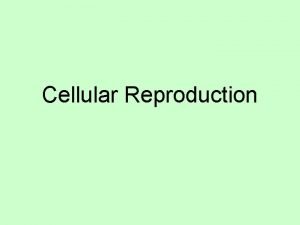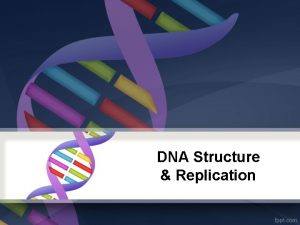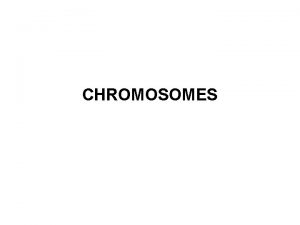Cell Reproduction Chromosomes Structure of DNA during cell





























- Slides: 29

Cell Reproduction

Chromosomes » Structure of DNA during cell division » Chromatid » Centromere » Chromatin

Chromosomes » Sex chromosomes » Autosomes » Homologous pairs » Karyotype » Diploid vs. Haploid

Prokaryotic Cell Division » Binary fission » Results in two identical offspring/new cells

Eukaryotic Cell Division » Mitosis » Occurs in somatic cells » New cells are identical

A. True B. False All of the non sex chromosomes are called autosomes.

Cell Cycle » Interphase and Mitosis

Interphase » Not considered Mitosis » G 1 – growth phase » S – DNA is copied » G 2 – growth phase; microtubules formed

Mitosis » » » Prophase Metaphase Anaphase Telophase Cytokinesis

Prophase » Centrosomes (centrioles) appear and move towards ends of cell » DNA as chromosomes is visible » Spindle fibers forms » Nuclear envelope begins to break down

Metaphase » Chromosomes line up in the middle of the cell » Spindle fibers attach to chromosomes

A. True B. False If a fruit fly has 8 chromosomes, then it’s haploid number is 4.

Anaphase » Spindle fibers pull apart the chromatids » New single chromosomes pulled towards pole

Telophase » Spindle fibers break down » Chromosomes return to chromatin form » Nuclear envelope reforms

Cytokinesis » Cleavage furrow forms » Parent cell cleaved into two identical offspring/new cells

A. B. C. D. Prophase Metaphase Anaphase Telophase In which phase of mitosis do [Default] [MC Any] chromatids separate and [MC All] become individual chromosomes?

Plant Cell Mitosis » Asters » Cell plate forms during cytokinesis; eventually becomes cell wall

Checkpoints » G 1 growth – cell must be healthy and large enough to divide; if not, then the cycle will not continue » G 2 synthesis – DNA that was copied will be checked and repairs made » M – cell will exit mitosis

Division of Sex Cells

Meiosis » Formation of gametes/haploid cells » Involves two distinct stages » Also goes through G 1, S, and G 2 phases » Occurs in diploid sex cells

Prophase I » Chromosomes and spindle fibers appear » Nuclear envelope begins to dissolve » Homologous chromosomes pair up » Crossing over can occur in a tetrad

Metaphase I » Tetrads randomly line up in the middle » Spindle fibers attach to each homologous pair

Anaphase I » Spindle fibers pull apart the tetrads, resulting in chromatids being pulled to opposite ends of the cell » Independent assortment

Telophase I and Cytokinesis » Chromosomes reach the end of the cell » Cytokinesis begins » 2 Haploid cells

Prophase II » Spindle fibers form » Nuclear envelope dissolves

Metaphase II » Chromosomes line up along the middle of the cell

Anaphase II » Chromatids are pulled apart by the spindle fibers.

Telophase II and Cytokinesis » Nuclear membrane forms around each set of chromosomes » Cleavage furrow begins to form » 4 Haploid cells

Gametes » Sperm ˃ Spermatogenesis » Egg ˃ Oogenesis
 Chapter 6 chromosomes and cell reproduction
Chapter 6 chromosomes and cell reproduction Dna content during cell cycle graph
Dna content during cell cycle graph The disadvantages of sexual reproduction
The disadvantages of sexual reproduction Asexualk
Asexualk Venn diagram of asexual and sexual
Venn diagram of asexual and sexual Chromosome vs dna vs gene
Chromosome vs dna vs gene Building vocabulary: the nucleus, dna, and chromosomes
Building vocabulary: the nucleus, dna, and chromosomes Dna, genes and chromosomes relationship
Dna, genes and chromosomes relationship Dna scrunches up and chromosomes are first visible
Dna scrunches up and chromosomes are first visible Chromosome and its function
Chromosome and its function Genes chromosome
Genes chromosome What is the relationship between dna chromosomes and genes
What is the relationship between dna chromosomes and genes Dna chromosomes genes diagram
Dna chromosomes genes diagram Organisms have different numbers of chromosomes
Organisms have different numbers of chromosomes 11-4 meiosis
11-4 meiosis Function of dna polymerase 3
Function of dna polymerase 3 Bioflix activity dna replication nucleotide pairing
Bioflix activity dna replication nucleotide pairing Coding dna and non coding dna
Coding dna and non coding dna Replication process
Replication process Chapter 11 dna and genes
Chapter 11 dna and genes Diagram a cell with four chromosomes going through meiosis
Diagram a cell with four chromosomes going through meiosis Cell with 4 chromosomes
Cell with 4 chromosomes Diagrams of mitosis
Diagrams of mitosis Lagging strand
Lagging strand Cell reproduction
Cell reproduction Mitosis sexual reproduction
Mitosis sexual reproduction Buoflix
Buoflix Cell reproduction
Cell reproduction Cell growth division and reproduction
Cell growth division and reproduction What is called
What is called
